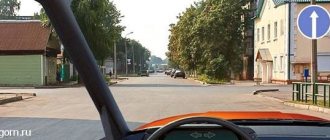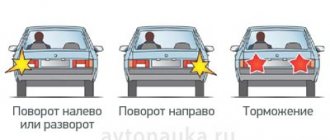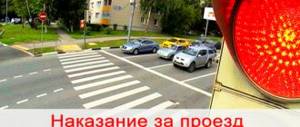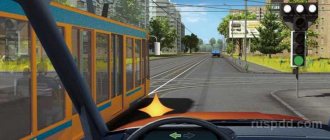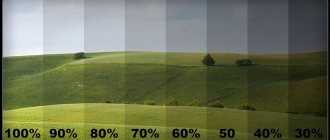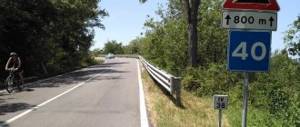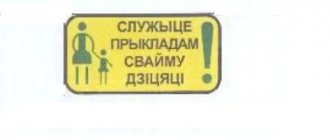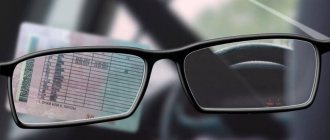Right turn
It is performed most often at intersections, and the rules of this maneuver are known to every driver, but they are not always followed, which can lead to emergency situations.
According to traffic rules
Under standard conditions, a right turn is made from the most extreme position on the road that is possible. Drivers are often in a hurry, do not yield to each other, turn from the right lane, placing themselves on it in two rows, but this is a violation - only the extreme right position is considered correct. If a car that turns in this way is involved in an accident during the maneuver, the driver will be found at fault because the maneuver was carried out incorrectly.
You also need to enter the road after a turn in the far right lane, although for many people turning into the left lane is much more comfortable. This is what most violations at intersections are associated with - drivers try to increase their radius of movement and end up driving incorrectly.
As a result, such violations often lead to various accidents at intersections, which could easily have been avoided if traffic participants had followed the rules.
In the absence of markings
For the correct implementation of the maneuver, the presence of markings is not at all necessary - the rules remain the same. From the far right position you must enter the farthest lane. Typically, such a turn does not cause problems for drivers.
From the left lane
Turning to the left is justified only in cases where it is impossible to maneuver from the right lane for some reason. In this case, turning from the left lane will not be a violation of the rules; the main thing is to perform the maneuver as carefully as possible, without interfering with other cars.
A variant of the dangerous situation is given below:
Other options
Like any rule, this has exceptions, because situations on the road can be different:
- If there is some kind of obstacle in the right lane after turning, you can drive into the left lane without interfering with other cars . An obstacle could be a broken car or serious damage to the roadway.
- You can enter the roundabout from any lane.
- If the traffic on the road is regulated by road markings, which imply movement in lanes, it is better to adhere to this particular trajectory when turning.
- If the outermost lane is a bus lane, you will have to pay attention to the markings . If it is separated from other lanes by a solid line, then you cannot cross it, but if the marking is intermittent, you need to change lanes to the right and turn from there. You also need to turn into the right lane, but then immediately change lanes if this lane is intended for buses.
Penalty for maneuvering out of your lane
When making turns out of your lane, the amount of the fine will be determined depending on what rules were violated.
- If the driver did not cross the solid marking line, but drove between the dotted lines, he is charged with liability under Article 12.16 of the Code of Administrative Offenses (Part 1). For failure to comply with the requirements of road signs or markings, you will have to pay 500 rubles.
- If the driver makes a turn, a U-turn from a lane that requires driving straight, in accordance with Part 2 of Article 12.16 of the Code of Administrative Offenses, he will be required to pay a fine in the amount of 1000-1500 rubles (about what the fine is for turning left under a sign where traffic is allowed only straight , read here).
- A driver driving a truck will be fined 500 rubles (or 5,000 for cities of federal significance) if he violates the rules of passage. Applied for punishment under Article 12.16 of the Code of Administrative Offenses, parts 6 and 7).
- Driving into a lane designated for public transport will result in a fine of 1,500 rubles. If the incident happened in St. Petersburg or Moscow, the fine under Article 12.17 of the Code of Administrative Offenses will be 3,000 rubles.
Tips for turning correctly
In order to learn how to turn right correctly, you will have to reduce the turning radius of the car so that it leaves the extreme right position and also ends up in the rightmost lane. To do this, you need to initially take the right position and, during the maneuver, twist the steering wheel harder to find yourself in the right lane, and not on the left side of the road. Of course, performing the maneuver correctly does not seem so comfortable, but it is much safer and more convenient for other cars, so it is better to learn how to turn correctly.
How are these situations regulated in the traffic rules?
The rules for making turns are established in section 8 of the traffic rules.
Paragraph 8.5 indicates that before making turns or U-turns, the driver must evaluate the route in advance. This allows you to take a suitable position on the roadway in a timely manner so that it is convenient to drive without creating emergency situations.
The traffic rules do not indicate where exactly a turn can be made under such requirements. Therefore, it should be taken into account that paragraph 8 applies to each case of turning - at intersections and outside them, outside public roads and on them themselves.
To make a turn, the driver of the vehicle must take an extreme position on the roadway, positioning himself in the direction he needs. There is no mention in the Rules that turn right only from right lanes, and left only from left lanes. There are intersections where traffic flows along several lanes, and options where single-lane traffic ends at an intersection in which the driver turns in one direction or another. Therefore, the term “corresponding extreme position” is more often used.
The requirement to occupy a certain position on the roadway applies to all intersections, except those where there is a roundabout. If there are several lanes for vehicles, a motorist can enter a roundabout intersection from any of them. But we should not forget that when turning you should stay as close to the right as possible. At roundabouts, entering from another (not the far right) lane is justified only when the others are occupied and the traffic is quite intense.
Reference! Paragraph 8.6 also states that the driver, when turning the car, must ensure that when leaving the intersection, he does not end up in the lane for oncoming traffic.
When turning left after successfully passing the intersection, you can continue driving in both the right and left lanes.
Subject to certain conditions, it is also possible to move along tram tracks. They represent an additional lane for the movement of cars, but they can be used in this capacity only when other lanes for cars are occupied, and there will be no interference with trams.
The driver can direct the vehicle to travel along rails located in the same direction - tram tracks in the opposite direction are a prohibited lane for traffic. And when turning from a road with tram rails on the left, it is from them that you will need to make turns and U-turns, if there are no signs indicating the direction of travel.
What maneuvers are allowed?
In order to make a left or right turn at an intersection from the second row, the driver must first take the extreme position in his lane for the desired direction. Turning is permitted if indicated by signs or markings.
Of two lanes
If a turn from two lanes is allowed, but there are no markings on the asphalt, the direction of the vehicle should be such that the car does not enter the oncoming lane, turning left, you should visually determine the middle of the intersection and move closer to it. When turning right, the vehicle is positioned closer to the right edge of the road for vehicle traffic.
Important! If the lines marked on the roads provide for a different driving order, and there are no special signs, you should move in accordance with the requirements of the markings.
Incorrect spelling of the words “to the right” and “to the right”
Incorrect formatting of these lexical units is mainly due to the inability to determine the parts of speech to which these words relate.
And for this you need to know the following things:
- what does part of speech mean?
- what questions does it answer?
- how prepositions are written;
- How do similar prefixes and prepositions differ from each other?
Knowing the answers to these questions, you can write these words correctly, without errors.
Noun with the preposition “to the right”
The separate spelling of a phrase is associated with the use of a noun with a preposition.
In this case, the common rule of the Russian language applies. Prepositions are always written separately.
The noun “right” from the phrase in question has several lexical meanings:
- A legal term denoting a set of legal norms in a society.
- The science that studies the rules of law.
- Subject of the educational institution.
- The ability to act in some way.
- Reason or reason.
- A document giving the opportunity to drive a vehicle.
In the latter case, the word “right” is used in the plural.
Examples in a sentence
Note that the synonymous adverbs “left” and “right”, which were also formed in the suffix-prefix way, are always written together and end with the letter “o”.
Let's look at examples of sentences with the adverbs “right”, “left” to remember their correct spelling:
- Sveta stepped to the left and opened the large iron door.
- Misha frowns, tilts his head to the left and takes a closer look.
- In the evening the car turned off the highway to the right and drove onto a forest road.
- The boy ran a little to the left and again rushed towards the house.
- Ivan turned sharply with his whole body to the right, throwing his pen and notebook up.
- A flat road with wolf and hare tracks went off to the left.
Test yourself! How should you write the verb “look”? To avoid confusion with the answers, see the correct spelling with examples in the following material on our website.
Let’s read the contexts with the adverbs “to the right” and “to the left” to understand the rule:
- Semyonov moved to the right - to work in the boiler room.
- If you go to the left, events will unfold along one path.
- Exit into the corridor, turn right and go past the dining room door upstairs.
- Uncle Zhenya, walking ahead, turns right at the fork.
- They drove under the bridge, then turned left to escape the crime scene.
- Anna Sergeevna turned right and walked with uncertain steps towards the hospital.
Controversial situations and ways to avoid punishment
Motorists often get confused when they find themselves in front of signs posted at an intersection. A moment's confusion can lead to a violation and a fine, or even an accident. To competently defend your rights, you can study the following points as carefully as possible:
- If a sign and markings conflict, the sign will take precedence.
- Sometimes signs include additional restrictions that set traffic movements and speeds. They operate exclusively within their own lane.
- When driving on a three-lane road, pay attention to the signs.
In front of the main ones, additional technical elements are always installed with the designation - 50-150 meters. If they are absent, tell any inspector who stops you for violating the lanes that you did not have time to change lanes due to the lack of signs. Important! If a report is nevertheless drawn up against you, indicate your disagreement in it - this will help the motorist defend his rights in court.
If there are traffic direction signs at a roundabout intersection, you can change your car at any time. But departure is carried out only after changing lanes to the far right lane. A different way of driving is chosen only if there is some sign for this.
Remember that even the fact that the driver allowed his wheel to hit the marking line can be classified as a violation (you can find out what the fine is for violating the markings when changing lanes in a tunnel, at an intersection, etc.). To prevent this from happening, place the vehicle on one lane , only when changing lanes can you change the direction of movement.
Sometimes there are no markings on the road surface, but visually it can be divided into three lanes. However, just before the intersection there is a road sign that regulates traffic in only two lanes. In this case, you should drive to the intersection along any suitable of the three lanes, and immediately before the intersection, change the vehicle into two.
Using the adverb "to the right"
The word is derived from the adjective “right”.
In this case, the following rule applies: adverbs formed from adjectives using prefixes and suffixes are written together.
Let's see what morphemes a word consists of. “Na-” is a prefix, “-prav-” is a root, and “-o” is a suffix. Therefore, this adverb is formed according to the mentioned rule.
In addition, the word answers the question “where?” and indicates the direction. Sometimes this adverb is used figuratively. For example, throwing money left and right.
What circumstances may lead to a violation?
The most common cause of violation is poor knowledge of the route or untimely response. The driver is late in assessing the situation while driving in the second lane, then decides not to hesitate, waiting for the next opportunity to turn, and makes a turn in violation of the rules. Another circumstance that tends to lead to violations is the presence of rails intended for tram traffic. According to traffic rules, you should drive onto the rails and perform a maneuver from them. Before carrying out, you must make sure that there is no interference with the movement of the tram.
